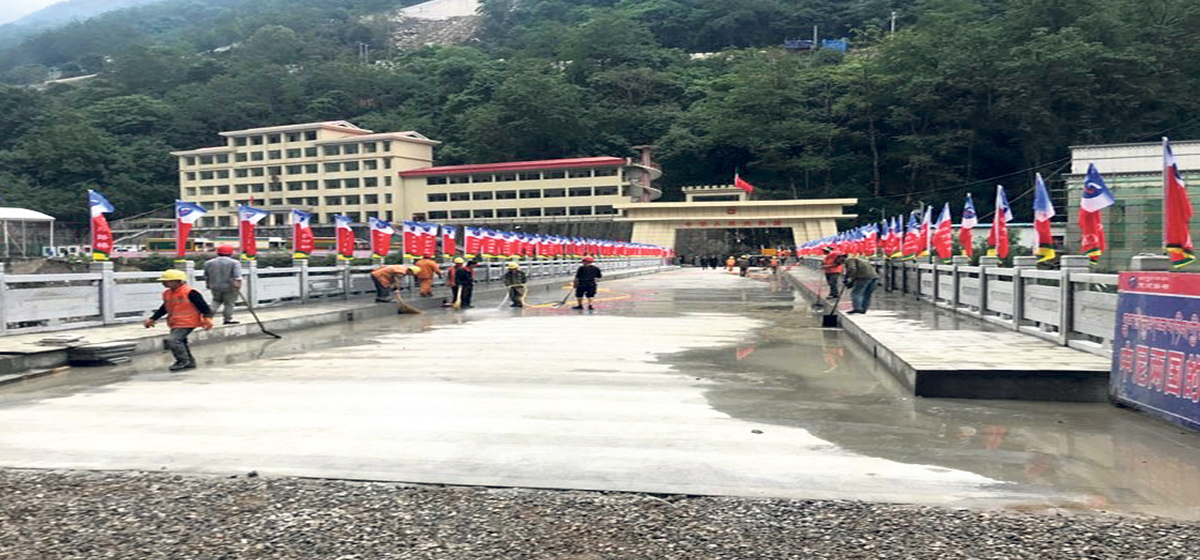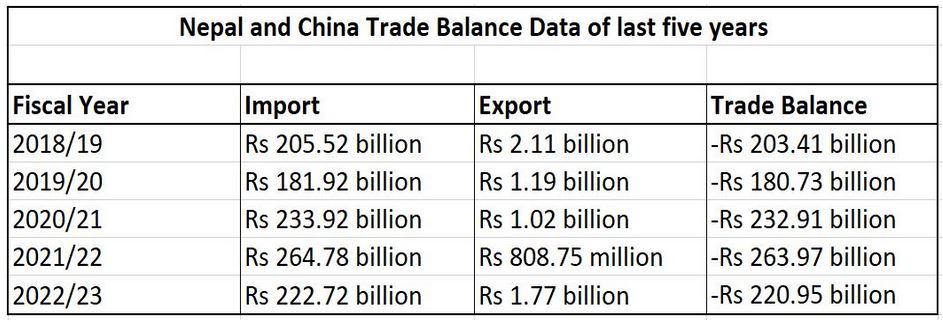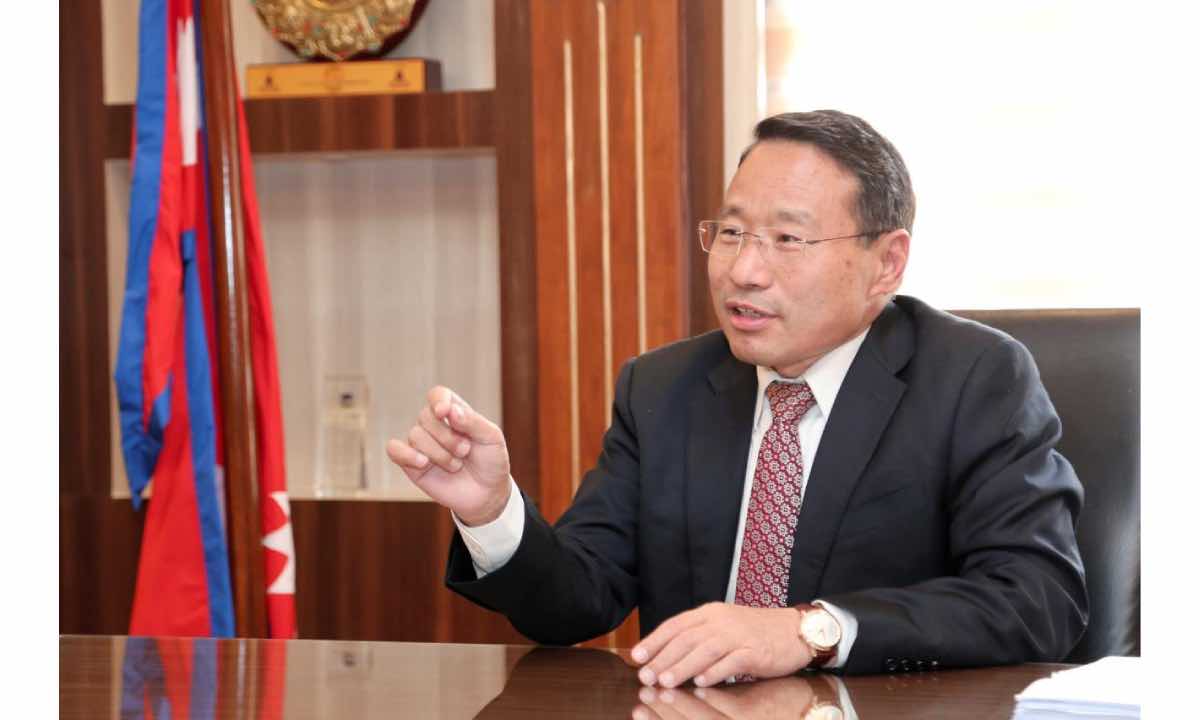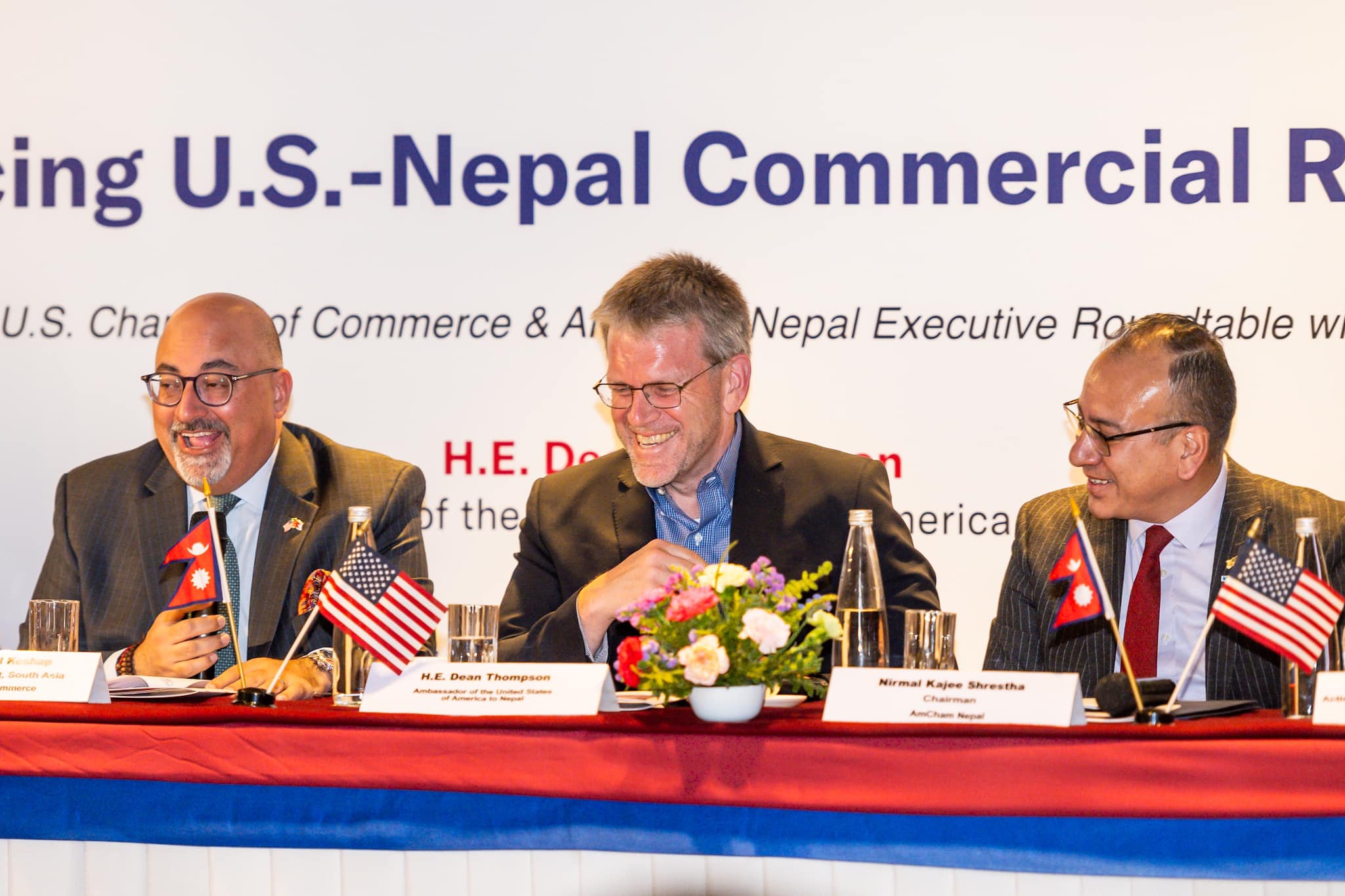
OR
Nepali traders ‘cautiously optimistic’ as Nepal-China border points resume after a hiatus of years
Published On: July 30, 2023 08:30 AM NPT By: Sajira Shrestha

KATHMANDU, July 30: On May 1, 2023, the Chinese government resumed two-way trade via Tatopani-Khasa border point after a hiatus of nine years. The decision was made in line with the first meeting of the Nepal-China Coordination Mechanism on Border Trade and Cooperation held on March 29 in Lhasa, Tibet that decided to resume operation of Tatopani-Khasa route and ensure full fledged operation of Rasuwagadhi/Kerung check point for two-way trade and people to people movement beginning April 1.
The decision to resume two-way flow of goods came as a relief to many as Chinese authorities had restricted the free flow of goods and services into Nepal through both of these transit routes even before the outbreak of COVID-19 pandemic. The closure of the border not only resulted in hardships for the Nepali businesspersons but also brought Nepal's yearly exports to China below Rs 1 billion a year.
According to the data of the Department of Customs, Nepal's exports to China declined to Rs 1 billion in 2020/21 from Rs 1.19 billion in 2019-20, marking a significant decrease. This amount is nearly half of the figure recorded in the fiscal year 2018-19 when shipments totaled Rs 2.10 billion.

In the recently concluded fiscal year, FY 2022/23, the nation's foreign trade experienced a notable downturn, witnessing a decrease in both imports and exports. According to the Department of Customs, the total foreign trade saw a decline of Rs 350 billion. In the previous fiscal year (FY 2021/22), the country's foreign trade stood at Rs 2.12 trillion, but in FY 2022/23, it dropped to Rs 1.77 trillion, indicating a reduction of 16.58 percent.
According to Hom Bahadur Basnet, president of the Sindhupalchok Chambers of Commerce and Industry, there has been a huge difference between the amount of trade between Nepal and China before the earthquake of 2015 and after the earthquake. “Before the earthquake, 50 to 150 vehicles filled with goods used to move daily on the Tatopani-Khasa route. But at present, only five to 10 vehicles move along the route,” he said.
Basnet claimed that business activities have shrunk after China halted the mobility of people through the Tatopani transit, especially after the onset of the Covid-19 pandemic. “China had not allowed the mobility of people due to COVID-19 pandemic. The restrictions are largely in place even these days. Due to this, the import of goods has not been easy, and the consignments have not reached their destinations on time,” he said.
“The shipment from various cities of China used to reach Kathmandu in approximately 20 days. However, it takes two to three months for the consignment to arrive at the destination these days as Nepali traders are forced to use the sea route for the transport of their goods. Timely transit of the shipment could significantly reduce transportation costs, leading to lower prices for consumers and generating job opportunities for the local population,” Basnet said.
Similarly, Dorjee Lama, a local businessman, expressed deep concern over the persistent issue of delayed delivery of seasonal goods. He revealed that by the time these goods finally reach their destination, the season is usually over, significantly impacting his business operations.
"Our goods are often stranded for several months, and when they eventually reach us, the season for those goods would have already concluded. This has had a severe impact on our business," lamented Lama.
The revenue collection from Tatopani, the northern border with China, fell short of the target in the last Fiscal Year (FY) 2022/23. The Tatopani Customs Office, which used to collect up to Rs 5 billion in revenue and provided significant support to the country's economy, has been facing revenue decline since the 2015 earthquake. According to the customs office, although the target of revenue collection of Rs 4.62 billion was set for the last year, only Rs 3.27 billion (70.84 percent of the target) was collected.
Basnet also pointed out that while the number of vehicles sent by China is small, they transport summer goods, such as clothes, in large quantities due to their nature, allowing for a significant number of goods to be fitted into a single vehicle. “However, traders and business people may encounter difficulties during the Dashain festival and upcoming winter as the goods for these seasons will be thicker, occupying more space in the vehicles,” he said adding, “Meeting the demands for seasonal goods in winter might be doubtful if China maintains the same transportation ratio in the future.”
Nepali traders and business people have encountered obstacles in achieving seamless trade with China, while the Chinese authorities contend that the disruptions at China-Nepal dry ports are primarily attributable to natural causes such as landslides and pandemic prevention and control measures. In an interview, a former Chinese Ambassador emphasized that China places significant importance on Nepal's urgent requirement to keep the dry ports open and unobstructed, and that efforts are underway to thoroughly study and address the pertinent issues.
Likewise, in April 2016, the then Prime Minister KP Sharma Oli paid an official visit to China, during which both countries signed an agreement that granted Nepal an access to four Chinese sea ports in Tianjin, Shenzhen, Lianyungang, and Zhanjiang, as well as three land ports in Lanzhou, Lhasa, and Shigatse for facilitating imports from third countries. Additionally, the agreement permitted Nepal to conduct exports through six designated transit points between Nepal and China.
Upon the conclusion of the Agreement on Transit Transport, both sides expressed satisfaction and directed their respective authorities to promptly initiate negotiations to create a protocol that would form an integral part of the agreement. This agreement was signed on April 23, 2016, in Beijing.
Subsequently, in April 2019, during the state visit of the then President Bidya Devi Bhandari to China, the protocol for implementing the Transit and Transport agreement was signed. This occurred following delegation-level talks between President Bhandari and her Chinese counterpart, President Xi Jinping.
But unfortunately, since the Trade and Transit Agreement was signed with China, granting Nepal access to seven Chinese ports for third-country trade, there has been no movement of any shipments even in seven years, according to the Ministry of Industry, Commerce and Supplies.
According to Dr Paras Kharel, the executive director at South Asia Watch on Trade, Economics, and Environment (SAWTEE), the COVID-19 pandemic might be one of the contributing factors to the lackluster implementation of the Trade and Transit Agreement. He pointed out that since bilateral trade was significantly impacted during the pandemic, it is only natural that transit-related trade would also be affected.
Dr Kharel mentioned that for the smooth operation of the Trade and Transit Agreement, Nepal should initially conduct a trial run. “At present, Nepal should focus on conducting a trial run where a study regarding what kinds of goods can be brought from which country can be cost effective,” he suggested.
As per a World Bank report, Nepal's untapped export potential, also referred to as "missing" exports, stands at approximately US$9.2 billion, which is twelve times higher than its current annual merchandise exports. Dr Kharel highlighted that the missing exports are particularly significant when it comes to China.
Despite the immense potential for Nepal to export various goods to China, the actual exports amount to only about two billion rupees, whereas Nepal imports a larger quantity of goods from China.
Meanwhile, it is also reported that people's movement has increased at Rasuwagadhi, the northern point along the Nepal-China border in Rasuwa lately. After the operation was resumed from April 1, there has been a rise in trade and tourist activities in the area.
According to the Department of Immigration, it issued a travel pass to 150 individuals from Rasuwagadhi for the movement along the Rasuwa-Kerung point. Chinese tourists have also started entering Nepal via the transit point and the graph is increasing day by day. The increasing movement of people at Rasuwagadhi is expected to revive the trade and tourism industry in Rasuwa, strengthening the ties among people residing along the border areas.
Amidst the challenges faced by local people and entrepreneurs in trade, their hopes for smooth operations remain alive. Local businessman Lama conveyed his optimism, expressing confidence that trade will soon resume in full swing. "Currently, we have Chinese delegates visiting Nepal, and our officials are actively engaged in discussions with them. I believe that these efforts will yield fruitful results for both Nepali and Chinese traders, paving the way for us to conduct our business smoothly," said Lama.
President Basnet also pointed out that although there has been limited movement in the trade routes, it is still a positive sign as these routes have recently come into operation after a long gap. "The operations have just commenced, and we hold a positive outlook for smooth functioning in these trade routes, along with the effective implementation of the Trade and Transit Agreement. However, we urge the government to engage in a proper discussion with the Chinese side to create a favorable environment for traders, business people, and local residents to fully utilize the available resources," he emphasized.
As Nepal and China celebrate 68 years of diplomatic ties this year, experts emphasize the significance of bolstering trade cooperation between the two nations. Strengthening trade infrastructure, streamlining customs procedures, enhancing communication channels, and providing crucial support and information to traders are identified as key factors to facilitate smoother trade operations at the China-Nepal border.
They also stressed the importance of continued dialogue and cooperation to address the challenges hindering seamless trade. By working together, the two countries can forge a mutually beneficial environment that unlocks fresh opportunities and propels economic growth for both the nations.
You May Like This

Nepal online trade: Decorating Nepal
Nepal Online Trade is a business initiative of Sajak Yonjan that sells décor materials imported from China, Hong Kong, and... Read More...

Trade, investment issues between Nepal, B'desh discussed
KATHMANDU, Feb 25: A senior aide of Bangladeshi Prime Minister Sheikh Hasina has said that both Nepal and Bangladesh need to... Read More...

Nepal trade information portal launched
KATHMANDU, Sept 29: The government has launched an online trade information portal to help support investment and trade facilitation. ... Read More...


Just In
- Clear Policies Set to Boost American Investment in Nepal: US Ambassador Thompson
- Second T-20 series: Nepal loses toss, set to go for fielding first
- Nepal Investment Summit 2024 and Victor Hugo Moments for Reforms
- Kathmandu continues to top the chart of world’s most polluted cities
- 3rd Investment Summit: Govt seeking letters of intent for 20 projects
- Gold price increases by Rs 400 per tola
- ‘We have established a long-term vision and policy stability in key investment sectors’
- FNCCI President Dhakal invites investors to explore Nepal's promising sectors






-1200x560-wm_20240427144118.jpg)










Leave A Comment